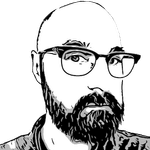EPI2ME 23.09-01 Release

Dear Nanopore Community,
The Customer Workflows team hope that our users in the northern hemisphere had a great summer break. We have been busy and in this post-holidays release we are delighted to introduce an updated version of our EPI2ME desktop application, a brand-new 16S/18S rRNA workflow, and a healthy collection of workflow updates.
Platform
The EPI2ME desktop application has been updated to v5.1.2. This update includes a collection of updates and fixes - including improved WSL integration (for our Windows users). This update is available for Windows, macOS, and Linux - EPI2ME desktop can be downloaded from https://labs.epi2me.io/downloads/.
Workflows
New workflow: wf-16s (v0.0.1) simplifies your 16S/18S/ITS amplicon sequencing data analyses. The new workflow is based entirely on wf-metagenomics and is configured with example data, rRNA databases and parameters to help you get started with your 16S rRNA sequencing adventures. Feedback, as always, is welcome.
wf-clone-validation (v0.5.1) now outputs a gbk file describing the feature annotations that may be used with downstream tools. A collection of minor fixes are also included.
wf-pore-c (v0.1.1) now has a
--hi_cparameter to create and outputs ahi_cfile that is compatible with downstream juicer contact map visualisation tools. Other fixes and changes are described in the linked changelog.wf-transcriptomes (v0.3.1) includes a bug fix to enable the workflow to accommodate input transcriptome files which contain the
|symbol in their headers.wf-somatic-variation (v0.4.0) adds modified base aggregation with modkit, differentially modified loci and region detection with DSS, and functional annotation for SNV and small indels. These annotations are prepared using snpEff. The workflow now also supports non-human species.
wf-human-variation (v1.8.0) adds LRP12 (a gene harbouring an expansion in amyotrophic lateral sclerosis (ALS) - details here) to the genotyped STR repeats, replaces the modbam2bed with modkit and renames the
--methyl/--phase_methyloptions with--mod/--phase_modwf-basecalling (v1.1.0) adds dorado v0.3.4 and auto-conversion of
FAST5toPOD5when performing duplex calling.- Previous versions only filtered reads by length if an output path for filtered reads was specified with
-l. This release fixes this undocumented behaviour and will now always filter reads by the length set with-zdefault 50. - Bug fixes for UMIs containing N in small reads, and incorrect mean quality calculation resulting in too many reads passing quality filter.
- Previous versions only filtered reads by length if an output path for filtered reads was specified with
wf-single-cell (v0.2.7) now copies the mitochondrial expression file now to output folder. Polars thread usage is now set correctly. The geneName attribute is now allowed in GTF annotation files.
An option to remove host reads has been included with the
--exclude_hostparameter. The user can provide either a FASTA file or MMI index, the sequence reads that map to this reference will be excluded from downstream metagenomic classification. TheBAMfile with the excluded reads is included as a result.The option
--include_kraken2_assignmentswill produce a per sample TSV file that indicates how each input sequence was classified as well as the taxon that has been assigned to each read. This TSV file will only be output at the completion of the workflow and therefore not at all if using the real time option running indefinitely. Available in the kraken2 pipeline.The new option,
--kraken_confidence, specifies a threshold score in the kraken2 pipeline. See this document for more information.For the report, we have included
--abundance_threshold(if it is a natural number it removes from the table those taxa with fewer counts; however to remove those taxa below a given percentage - use a value between 0-1) and--n_taxa_barplotcontrols the number of taxa displayed in the barplot and groups the rest under the category ‘Other’.
All of our workflows are open source. Would you like to contribute a feature? Please let us know how you think our content could be made even better.
Thanks for listening!

